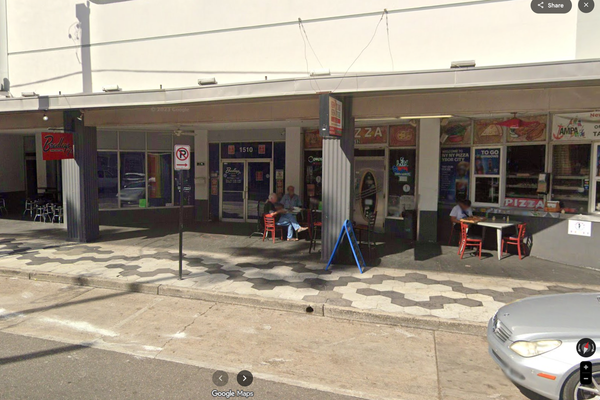
Have you ever walked into a supermarket for a gallon of milk, only to walk out with $100 worth of groceries you never intended to buy? If so, you’re not alone, and it’s certainly not a coincidence; in fact, it’s by design. Supermarkets are masters of psychology, meticulously crafting an environment that encourages you to spend more time and, consequently, more money in their store. These supermarket tricks are subtle yet effective, specifically targeting your subconscious impulses. Therefore, by understanding the psychology behind the store’s layout and marketing, you can become a more mindful shopper and stick to your budget.
1. The Maze-Like Layout
The moment you walk in, you’re often greeted by a vibrant display of fresh produce or a fragrant bakery, which is designed to stimulate your senses and put you in a good mood. This, of course, is the start of the maze. To begin with, supermarkets intentionally create long, winding aisles to maximize your exposure to thousands of products you don’t need. Consequently, this layout makes a quick “in-and-out” trip nearly impossible, forcing you to walk past countless temptations. As a result, the longer you’re in the store, the more likely you are to make impulse purchases.
2. Essentials at the Back
You have likely noticed that staple items like milk, eggs, and bread are almost always located at the very back of the store. This is one of the oldest supermarket tricks in the book. Specifically, by placing these high-demand items as far from the entrance as possible, the store forces you to walk through the entire space just to get them. This journey, in turn, takes you past end-cap displays, sale signs, and thousands of other products. Ultimately, this dramatically increases the odds that you’ll grab a few extra things along the way.
3. Eye-Level Product Placement
The most valuable real estate in any grocery aisle is undoubtedly the shelving at adult eye level, and for this reason, brands pay a premium for this placement. Products placed here are the ones stores and manufacturers want you to buy most, as they are often the most profitable. In contrast, cheaper options and store brands are typically placed on the top or bottom shelves, requiring you to look up or bend down. Furthermore, children aren’t immune either, as sugary cereals or snacks are strategically placed at their eye level to encourage pester power.
4. The Illusion of a “Sale”
First, sale signs with bright, bold colors create a sense of urgency and the feeling of getting a good deal. However, not all sales are what they seem; for example, a “10 for $10” sign doesn’t always mean you have to buy ten items to get the sale price. In many cases, you can buy just one for $1, but the sign psychologically nudges you to buy more. Ultimately, these types of supermarket tricks play on your fear of missing out on a bargain, which in turn encourages you to stock up on items you don’t need.
5. Soothing Music and Smells
The slow, soothing music playing in the background isn’t just for ambiance; in reality, it’s intended to make you slow down. Indeed, studies have shown that shoppers who move at a more leisurely pace tend to spend more money. Similarly, the smell of rotisserie chicken or freshly baked bread pumped through the store is meant to make you feel hungry. After all, a hungry shopper is an impulsive shopper and is, therefore, more likely to fill their cart with high-margin prepared foods and snacks.
6. Oversized Shopping Carts
Have you ever noticed that shopping carts seem to have gotten bigger over the years? This isn’t an accident; rather, it’s a deliberate strategy to influence your purchasing habits. A larger cart, for instance, seems emptier with just a few items in it, subconsciously encouraging you to add more products to fill the space. Therefore, if you’re only planning on grabbing a few things, you should opt for a handbasket instead. This physical limitation can then be a powerful tool against unconscious overspending.
7. End-Cap Displays
The displays at the end of each aisle, also known as end-caps, are prime real estate for impulse buys. Consequently, companies pay top dollar to feature their products here, often pairing them with a “sale” sign to make them seem irresistible. However, these items are not always on sale and are sometimes even more expensive than similar products in the aisle. In short, these displays are designed to catch your eye and convince you that you need something you weren’t even looking for.
Shop Smarter, Not Harder
From the moment you grab a cart to the moment you check out, supermarkets are employing a host of psychological tactics to separate you from your money. Indeed, these supermarket tricks are not about providing value but are instead about maximizing the store’s profit. The key to beating them, however, is awareness; for instance, always shop with a list, avoid going to the store hungry, and be skeptical of prominent displays and “sale” signs. In doing so, you can turn a critical eye on your shopping environment and finally take back control of your cart and your budget.
What’s the sneakiest trick you’ve noticed at your local supermarket? Share your observations in the comments!
Read More:
10 Budgeting Apps That Collect More Than Just Your Money
9 Budget Cuts That Make Life Worse (But Everyone Pretends It’s Fine)
The post 8 Sneaky Ways Supermarkets Trick You Into Spending More appeared first on Clever Dude Personal Finance & Money.







